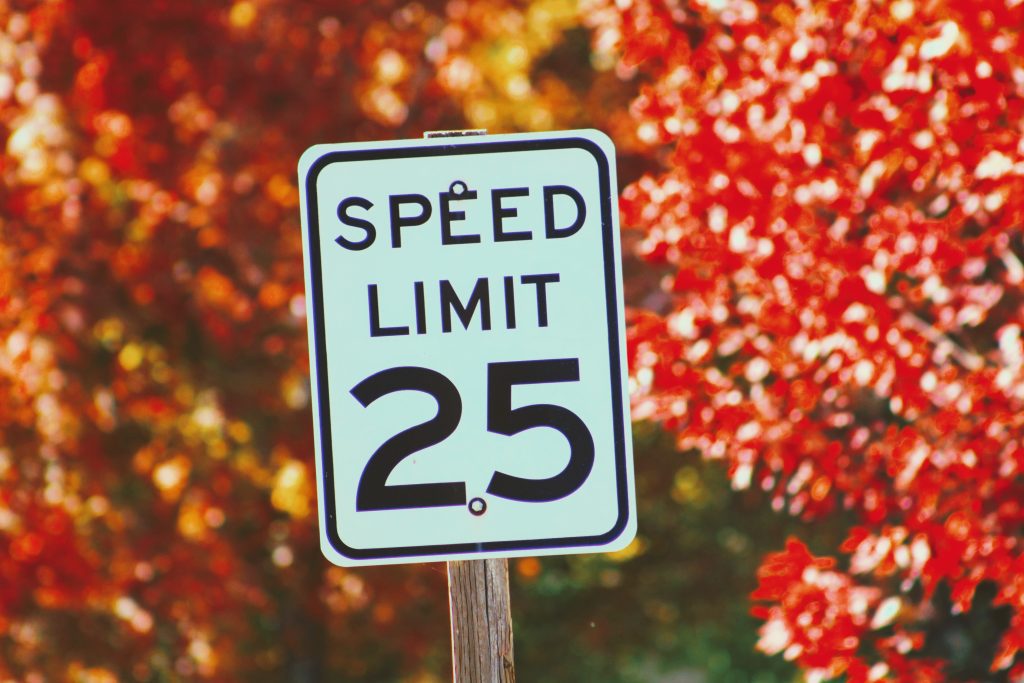
September 14, 2023 By Carol Britton Meyer
Following an outcry about the recent placement in historic downtown Hingham of four flashing signals informing motorists of the speed at which they are traveling and a number of 25 mph speed limit signs to enhance pedestrian and vehicular safety, the Select Board will discuss how to better place this hardware and whether there are fixtures with a more appropriate style for the area.
In June, the board approved — upon the recommendation of the Traffic Committee — the establishment of a 25 mph speed limit in certain areas of the Downtown Hingham Business District, and the signs and flashing signals were installed to help accomplish that goal.
“These flashing signs are an effective speed management tool that heighten driver awareness as to what the actual speed limit is compared with the speed at which they are driving,” Town Engineer JR Frey told the board this week.
The signs and signals were placed so as to give drivers a warning of the new speed limit and to remind them to “slow down, obey the law, and to be courteous drivers” if they are exceeding that limit, he explained.
While installing safety and traffic-calming measure in downtown Hingham and other locations around town is a top priority, according to Select Board Chair Liz Klein, so is maintaining the downtown’s historic character and aesthetics.
Town Administrator Tom Mayo explained that Historic Districts Commission Administrator Andrea Young had reached out to him suggesting the need for a public process since the downtown area is in an historic district.
Select Board member Joseph Fisher noted that some of the signals are placed near residences and that furthermore, light poles were taken down for aesthetic reasons on North Street years ago and now there are traffic signs and signals.
Board member William Ramsey, while understanding of the issue of the historic value of the downtown area, said he and other town officials “have heard incessantly from residents about the need to take action with respect to the speed of vehicles traveling in downtown Hingham and other parts of town. People have gotten hit, and there was a fatal accident recently in the area [Beal Street]. I think it’s good that the town is taking steps to address these issues.”
That said, Ramsey wondered whether the poles and signals could be positioned in more appropriate locations so as not to interfere with the lives of residents and asked Frey to gather input from Young — who has done research on styles that are more historically appropriate — and the HDC “to see if we can align these traffic control measures with the historic goals in downtown Hingham. Let’s have a public process and then go from there.”
Klein noted that “this is not just about signage and slowing down cars — it’s also about changing drivers’ behavior. Hopefully people will get used to this new traffic pattern and slow down or not cut through the Square anymore.”
Terry Granahan, who owns the historic building at 25 North St., said seeing the signs “made my blood boil” and that his tenants have complained about the flashing lights. “They look like hell,” he said. “They are devaluing my property, and I think they should be removed immediately,” he said.
Summer Street resident Tom Wilsson, who is involved with the Old Ship Meeting House, said the sign recently placed in front of the building “couldn’t be worse” from an aesthetic standpoint.
“That’s the place where everyone first sees the meeting house and takes photos,” he said. “I recognize the safety and speed issue; it’s just a matter of thinking it through more. I wish we could have been involved during the initial discussions.”
Young, who participated in the meeting remotely, said she was surprised to see that these signs and signals had been installed. “While to some the visual representation of our heritage is not important, a lot of people come to this town to experience what we have.”
While she thinks installing appropriate signage makes sense, Young believes that more compatible fixtures can be found and installed following further public discussion but “not in front of a national historic landmark,” referring to the Old Ship Meeting House.
“We’ll need to figure out appropriate locations and styles,” Klein said. “We’ll revisit this issue at our Sept. 19 and 26 meetings, and if we don’t have a solution by the 26th, we can [take the current] signs and signals down and start over.”
She noted that this project “wasn’t done willy nilly,” and that the goal of everyone involved is to enhance public safety.
“However, I do want to take step a back, gather feedback, and find a good solution, even if it means extra patrol cars downtown,” Klein said.


I live at 182 North Street, the Samuel Lincoln Cottage, the antique house that had a SUV parked in the front room after taking out 18′ of our house. Would you like to live through the destruction that car made? The town should do everything it can to prevent other homes from being destroyed. We now have one of the signs to the right of our house and couldn’t be happier. Unfortunately, when I stand on the sidewalk and watch the sign and the cars coming down the road, the majority of the cars are not slowing down. I think we need police handing out tickets to make an impression, or possibly a camera taking pictures of the license plates of the offenders.
For those complaining about the sign by Old Ship Church, I stood at the sign and looked across the street at the telephone poles with big boxes or round barrels attached to them, not to mention all the wires going along the street and across it. Nothing could be uglier, but since they are useful, they remain as the speed sign should.